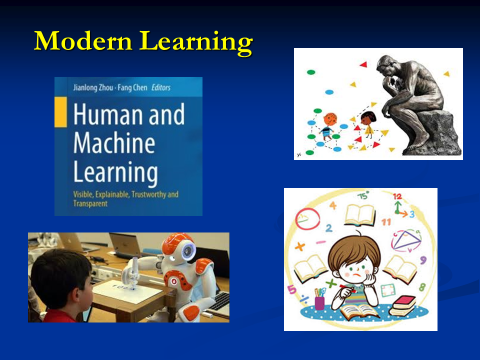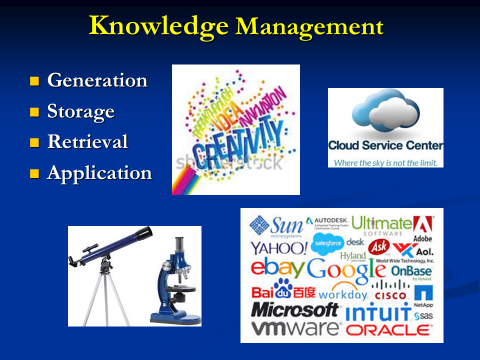
Modern Learning
– Musings of Dr. Jamie Hsu, 9.20.2019
The ubiquitous presence of the internet, digital libraries, and cloud centers, has drastically changed how we learn. Learning involves four stages of knowledge management: generation, storage, retrieval, and application. These components are all affected by digital technology, but in different ways and to varying degrees.
Knowledge Generation — Acquiring knowledge is the most essential part of learning. Through research, observation, experiments, and analysis, people generate new knowledge in science, engineering, medicine and other fields. Advanced microscopes, telescopes, computer simulations, and digital tools have improved the efficiency with which people gather data and create new knowledge. Yet, human creativity and imagination are still the key in the process of discovery.
Knowledge Storage — Accumulation and codification are currently hot topics. A lot of information is stored in places like Wikipedia, public and private databases, and cloud centers. Gaining insights from the vast amount of data is becoming a critical competitive weapon. Here, the advancement in machine learning and AI is outpacing the abilities of humans.
Knowledge Retrieval — Dissemination of knowledge is becoming much easier. Students, scholars, and average citizens are doing this on a daily basis. Google Search, chat-bots, and virtual personal assistants are used by kids and adults alike. Information (and misinformation) is really at everyone’s fingertips. The role of parents and teachers has diminished in this stage. It’s important to teach kids how to differentiate real and misinformation.
Knowledge Application — How we use knowledge is probably the most important differentiator for learners. The application of knowledge in our personal lives, careers, and social services makes us effective learners in the age of machine learning and massive information flow. Fortunately, we still outshine most machines and robots in the creative and empathetic application of knowledge to serve mankind.
In another blog, we’ll discuss how we learn as individuals. Happy Learning.


現代化的學習
-作者 許俊宸博士
-中譯 薛乃綺
無所不在的網路、數位圖書館以及雲端平台,已經劇烈地改變了我們的學習方式。而學習涉及到四個知識管理階段:生成、儲存、檢索和應用。這些元素都受到數位技術的影響,但方式與程度卻有所不同。
知識生成 – 獲取知識是學習中最重要的部分。透過研究、觀察、實驗和分析,人們在科學、工程、醫學及其他領域上產生了新的知識。高階顯微鏡、望遠鏡、電腦模擬器以及數位工具,已經提高人們在收集數據和創造新知識上的效率。然而,人類的創造力和想像力仍然是發現新知過程中的關鍵要素。
知識儲存 – 資訊的積聚和編碼是當前熱門議題。許多的資訊儲存在維基、公共和私有的數據庫、以及雲端平台等地方。從海量數據中獲取深刻見解,已成為一項關鍵具競爭力的武器。在此,機械與AI的學習進展已經超越人類的能力。
知識檢索 – 知識的傳播變得越來越容易。學生、學者、乃至於一般人,每天都在做這些事情。不論是大人、小孩,都可以使用Google、聊天機器人、以及虛擬個人助理。訊息(以及垃圾訊息) 確實是每個人觸手可及的。到了這個階段,父母和老師的作用已經大幅減少。最要紧的是教小孩如何分辨真假。
知識應用 – 我們如何使用知識,可能是學習者最重要的差異因素。知識在我們個人生活、工作、社交上的應用,使我們成為機器學習和海量訊息時代中有效率的學習者。幸運的是,在知識創造与應用,以及熱誠服務人群方面,我們仍然勝過大多數的機械以及機器人。
在另一個部落格中,我們將討論各种不同的個別學習方式。
祝大家學習快樂!


